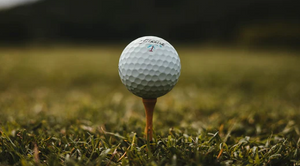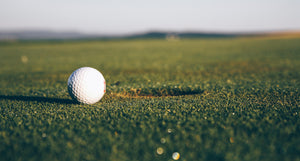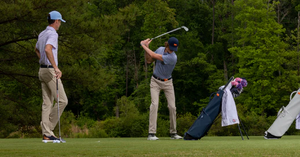How to Spin a Golf Ball
Whether you’re a new golfer or seasoned veteran, there’s no doubt you’ve seen Tour pros hit shots into the green, only for it to spin back like a rocket.
Being able to spin the ball is something that many amateurs struggle to achieve. We’ll cover the backspin, its importance, and how to do it yourself.
What Is Backspin, and Why Is It Important?
Backspin is a technique where the ball flies through the air, spinning backward. Once the ball hits the ground, the backspin will make it back up. Generally, a golf ball spins in the same direction. However, in this case, the ball spins towards the rear.
Backspins are an important part of golf. Without it, your ball will roll too far forward and not make it to the green. However, having too much backspin will cause it to fly too high and end up in the trees or rough.
It’s a strategic technique when hitting onto a green where the hole is close to a sand trap. The backspin lets you land beyond the hole. Then, the spin takes it back in the direction of the hole.
Backspins control your shots and ensure they stay within a particular area. This technique ensures a shorter travel distance than hitting it without a spin.
Furthermore, backspins add loft to your shots. They’ll rotate on an axis and lift off the ground more quickly than if you would hit without spin. The additional loft increases your distance or gets the ball up and over obstacles.
Lastly, backspins help enhance your accuracy. If you hook or slice your shots frequently, backspins can help keep your shots straight. Since backspins on the ball counteract the direction of motion, it’ll equal the effects of wind.
Regardless of your skill level, adding more spin to the ball can help better control your shots, add loft and increase accuracy.
How Do You Get Backspin on a Golf Ball?
Knowing how to place backspin on a golf ball can significantly improve your game. Here are the steps to perform a backspin technique:
Step 1: Get Your Equipment Ready
No matter how good your technique, a golf club with muddy or blunted grooves can ruin your shot. We recommend cleaning the grooves before every shot, ensuring the clubface remains dry. A clean clubface ensures no friction loss, helping to maximize the ball’s speed.
Ensuring you’re working with a golf club you’re comfortable using. It’s best to have fresh grooves when doing a backspin, so consider changing the wedges every few months.
Step 2: Properly Map Out Your Shot
Seasoned and professional golfers know how to map or predict how their shot will end up. Start by determining how far your shot can go. If you play often, you’ll know the distance you can reach.
Step 3: Place the Ball in the Correct Position
Setting your ball for a backspin is different from regular shots. Typically, you’ll place the golf ball in the center of your stance. However, with backspin, you’ll want to place the ball closer to your back foot, making it easier to hit down on the ball.
Ensure that you can get into a wide swing with your club, ensuring you can produce maximum force on the ball.
Step 4: Hit the Ball at a Steeper Angle
When raising your club for the swing, ensure it’s upright before bringing it down. By increasing the angle of attack, the club head travels down at a steeper angle. The angle means you come in contact with the ball before striking the soil.
The secret is to hit the ball first and then the turf. The shot increases your spin rate and provides greater control. When hitting the turf first, you lose friction and impact on the ball, hence a slower backspin.
Step 5: Hit Low on the Open Clubface
Backspins require a high level of friction, which can be done by hitting low on the clubface. Aim to compress the golf ball against the clubface.
You won’t have to keep the club at a fixed degree and avoid rotating your wrists during impact, which can reduce the compression. When your club hits the ground, this can cause your wrists to move out of alignment. Maintaining the optimal position of your wrists throughout the impact is essential for consistent backspin.
Watch your form to ensure you aren’t developing bad golf swing patterns, which could impact your body negatively.
Frequently Asked Questions
How Do Pro Golfers Spin the Ball So Much?
If you’ve ever wondered how pro golfers seem to be doing something spectacular with their spin on television, there are several reasons for that.
Most tour pros have a faster club head speed for their shots, meaning they’re hitting the ball harder and more consistently than the average golfer. The swing speed generates a higher spin rate on their golf balls.
Of course, before you try swinging it harder, always play it safe and ensure you have the proper swing form first to prevent golf injuries.
There are factors outside of your control. Tour pros have golfer balls with higher spin rates and may play in ground conditions conducive to backspins. A softer, well-water green with a slope from back to front is excellent for achieving maximum backspin.
Final Thoughts
Adding backspin onto your golf ball is one of the most crucial skills to master when playing. Backspins will help your ball fly straighter and farther while helping you stop on the greens like clockwork.
With practice, you’ll be able to nail the backspin and see significant improvements in your game.
For more advice and an extensive selection of professional-grade golf bags, attire, and more, check out STITCH Golf.


